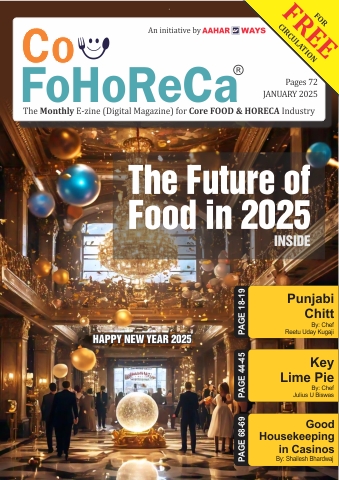Double Frying Meets Baking: A Crunch Revolution
Over time, chefs have experimented with various cooking methods to achieve that ideal balance of crispiness, flavor, and tenderness.
The quest for the perfect crunch in cooking has long been a
driving force in the culinary world. From crispy French fries to golden fried
chicken, the texture of food is often as important as its taste. Over time,
chefs have experimented with various cooking methods to achieve that ideal
balance of crispiness, flavor, and tenderness. One technique that has been
gaining traction recently is the combination of double frying and baking,
creating a new revolution in achieving that elusive crunch. This fusion of
techniques brings together the best of both worlds, enhancing texture while
offering healthier, more efficient cooking options.
Double frying is a cooking method that involves frying food twice to achieve a crispier, crunchier exterior. Typically, the food is first fried at a lower temperature to cook it through, then removed and allowed to rest for a few minutes. It is then fried a second time at a higher temperature, which results in a much crispier outer layer. This technique is commonly used for items like fried chicken, French fries, and even certain vegetables. The first fry helps to cook the food evenly, while the second fry provides that extra crunch that people love.
Baking, on the other hand, offers a healthier alternative to frying by using dry heat to cook food, often resulting in a less greasy final product. When applied to foods that are typically fried, baking can sometimes leave the texture wanting, lacking the signature crispiness that frying offers. However, when combined with double frying, baking introduces a new dimension to the crunch experience. The idea is simple: first fry the food to create a crispy outer layer, then bake it to finish cooking and add another layer of crispness without excessive oil.
This combination of techniques is particularly beneficial in a range of dishes, from snacks to full meals. Take chicken wings, for example. A common approach is to double fry the wings to achieve an ultra-crisp exterior and tender interior. However, for those looking to reduce oil consumption, the final step can involve baking the wings for a few minutes to allow the heat to finish cooking the meat and further enhance the crispiness. The result is a dish that’s both crispy and juicy, with less oil soaking into the food.
Double frying and baking are also ideal for achieving the perfect texture in potatoes. French fries, often a favorite comfort food, can benefit from this method. First, the fries are blanched in hot oil to cook them through. Then, they are removed and allowed to cool before undergoing a second fry at a higher temperature to crisp up the outside. To reduce the amount of oil used, the final touch involves baking the fries in a hot oven for a few minutes to further crisp the exterior while preserving the fluffy interior.
This approach also works wonders with battered foods. Tempura, for instance, is traditionally deep-fried, which gives it a light and crispy texture. By employing the double fry and bake technique, chefs can achieve a similar texture while using less oil. The food is first fried to cook the batter, then baked to add an additional layer of crispness, creating a crunch that is both delicate and satisfying. This method is perfect for those looking to enjoy the crunch of deep-fried foods with a more balanced approach to oil consumption.
In addition to the texture benefits, this combination of cooking methods offers a significant reduction in cooking time. While double frying alone can take some time, the addition of baking can speed up the process, especially when preparing larger batches of food. Since baking provides an even and consistent heat distribution, it helps to ensure that the food is fully cooked and evenly crisped, reducing the likelihood of overcooking or undercooking.
The fusion of double frying and baking isn’t just a culinary trend—it’s a game-changer for those looking to achieve that perfect crunch without compromising on health. It allows for more control over the texture and flavor of food, offering a balanced approach to cooking that combines the best features of both frying and baking. This innovative method is a testament to how modern chefs continue to push the boundaries of cooking, creating new ways to enjoy classic dishes while making them lighter, healthier, and more delicious than ever before.
.png)





























